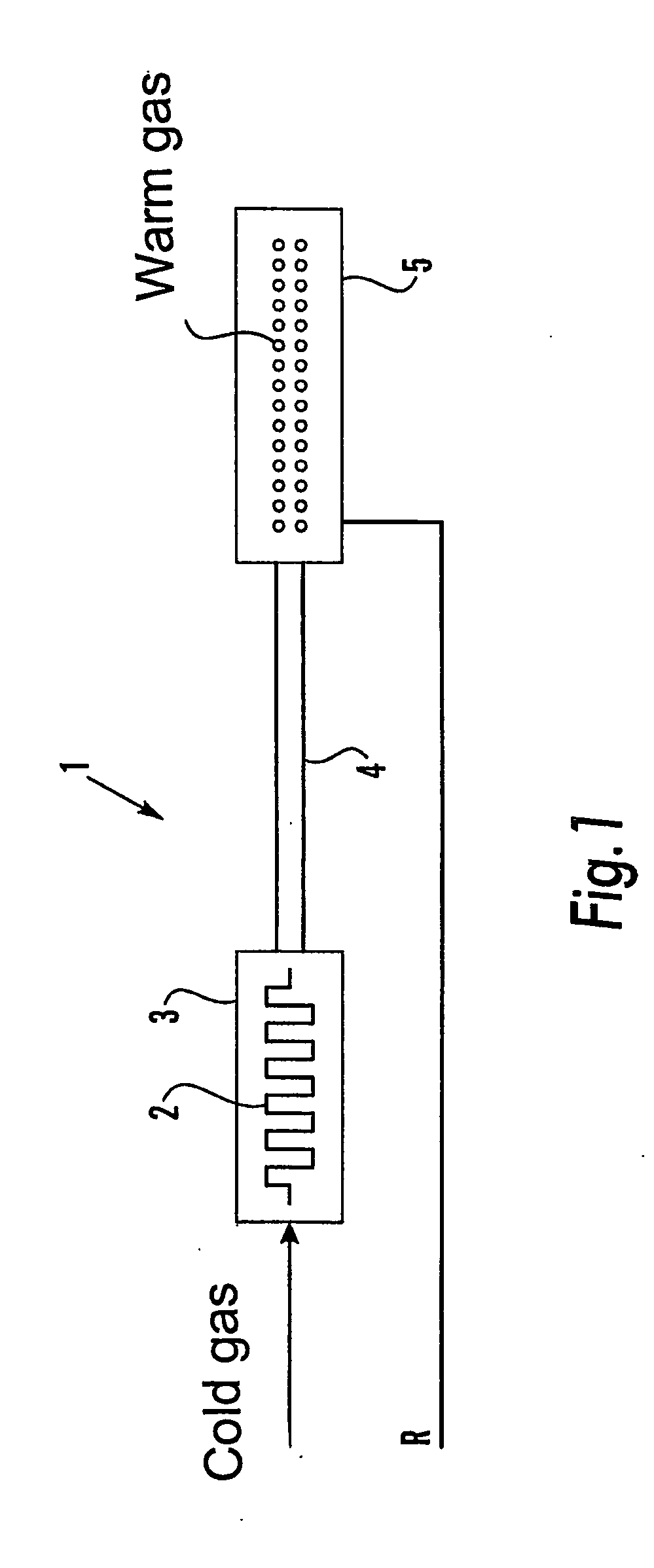Method and an Apparatus for the Supply of a Gas
a gas supply and gas technology, applied in the field of gas supply methods and apparatuses, can solve the problems of extremely sensitive to gas flow variations, rarely up to 30 minutes, and relatively long heating time, and achieve the effects of increasing the thermal transfer surface area of the shell, increasing the efficiency of the heating process, and increasing the application effect of hot gas
- Summary
- Abstract
- Description
- Claims
- Application Information
AI Technical Summary
Benefits of technology
Problems solved by technology
Method used
Image
Examples
Embodiment Construction
[0022]FIG. 1 shows an apparatus 1 which reflects a hitherto applied mode of approach which is employed in order to make possible a powerful temperature elevation of a gas or gas mixture. Cold gas or gas at normal temperature is fed in at the left-hand end of the apparatus 1 shown in the figure to a heating element 2 which comprises one or more filaments surrounded by one or more ceramic elements 3. The ceramics elements 3 are, because they are intended to store and emit a relatively large quantity of energy and because they are thermally insulated, relatively bulky and can, int. al. for this reason, not be placed in association with the site of application for the hot gas. Consequently, the heated gas is led into conduits 4 in order to be conveyed out to these positions where the nozzles 5 are disposed. In or at the nozzles 5, temperature sensors (not shown) are connected in whose signals are fed back to a regulator unit R.
[0023]FIG. 2a shows an apparatus 7 for realising the mode of...
PUM
| Property | Measurement | Unit |
|---|---|---|
| length | aaaaa | aaaaa |
| length | aaaaa | aaaaa |
| temperature | aaaaa | aaaaa |
Abstract
Description
Claims
Application Information
 Login to View More
Login to View More - R&D
- Intellectual Property
- Life Sciences
- Materials
- Tech Scout
- Unparalleled Data Quality
- Higher Quality Content
- 60% Fewer Hallucinations
Browse by: Latest US Patents, China's latest patents, Technical Efficacy Thesaurus, Application Domain, Technology Topic, Popular Technical Reports.
© 2025 PatSnap. All rights reserved.Legal|Privacy policy|Modern Slavery Act Transparency Statement|Sitemap|About US| Contact US: help@patsnap.com



